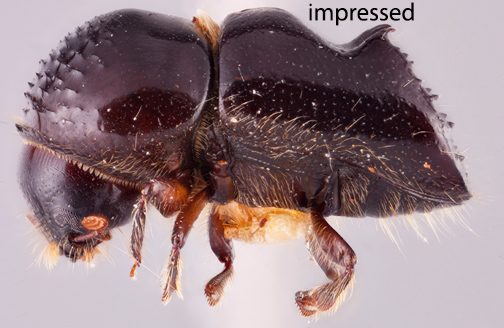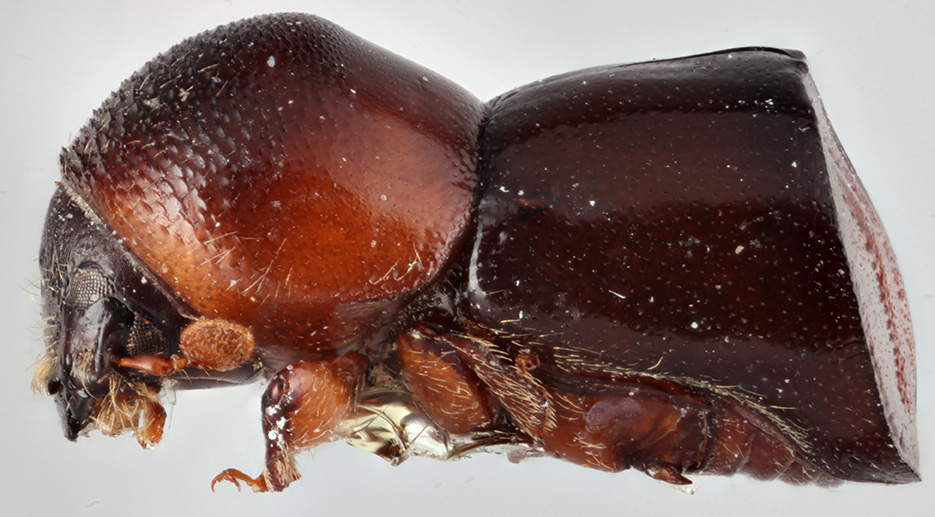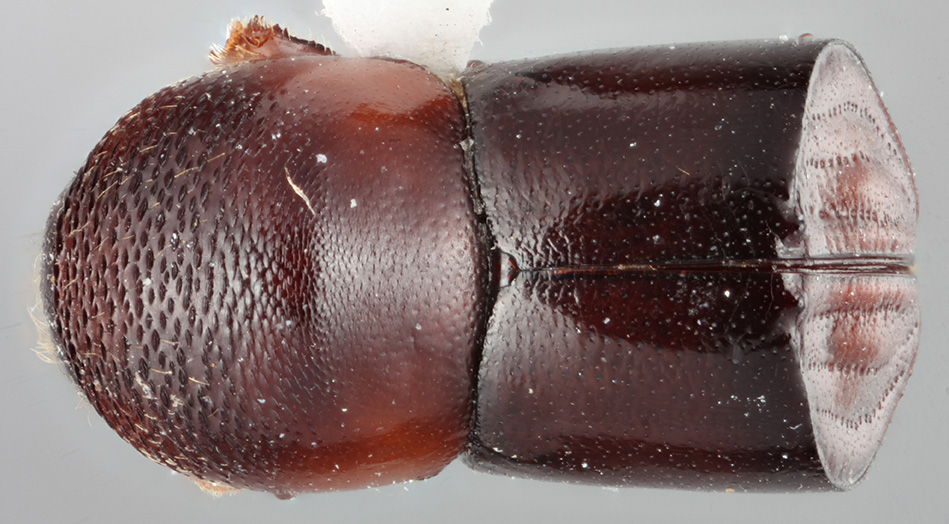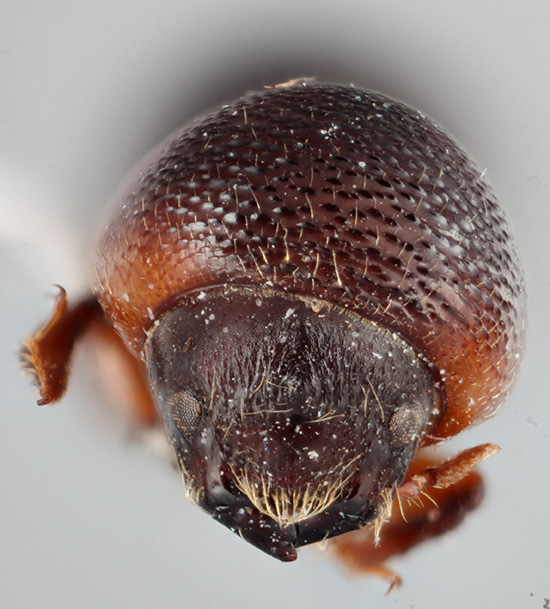Amasa beesoni
|
Amasa beesoni cotype lateral; R.K. Osborn |
|
Amasa beesoni cotype dorsal; R.K. Osborn |
|
Amasa beesoni cotype declivity; R.K. Osborn |
|
Amasa beesoni cotype frontal; R.K. Osborn |
Taxonomic history
Pseudoxyleborus beesoni Eggers, 1930: 207.
Amasa beesoni (Eggers): Wood, 1984: 223.
Diagnosis
5.0 mm long (n = 1); 2.17 times as long as wide. This species can be distinguished from all other species in Southeast Asia by the completely divided eyes.
May be confused with
Distribution
‘Borneo’, West Malaysia, Myanmar, Thailand
Host plants
The only host records are from the family Sapindaceae (Nephelium, Xerospermum), and the species may have a fixed host association with this family (Browne 1961bBrowne 1961b:
Browne FG. 1961b. The biology of Malayan Scolytidae and Platypodidae. Malayan Forest Records 22: 1-255.).
Remarks
Only Amasa beesoni and the Indomalyan species A. glauca (Sampson) possess completely divided eyes. Amasa beesoni is easily distinguished from A. glauca by the presence of a small tooth on the first interstriaeinterstria:
longitudinal spaces along the elytra between the striae, which is not as<br />
impressed and bear smaller punctures.
 at the top of the elytralelytral:
at the top of the elytralelytral:
pertaining to the elytra
declivitydeclivity:
downward slope of either the pronotum or elytra
 , the impressedimpressed:
, the impressedimpressed:
a depression in a surface
 declivitaldeclivital:
declivitaldeclivital:
pertaining to the elytral declivity
striae, and densely punctured declivitaldeclivital:
pertaining to the elytral declivity
interstriae.
DNA data
specimens not available for sequencing





